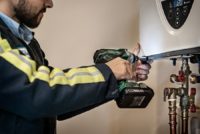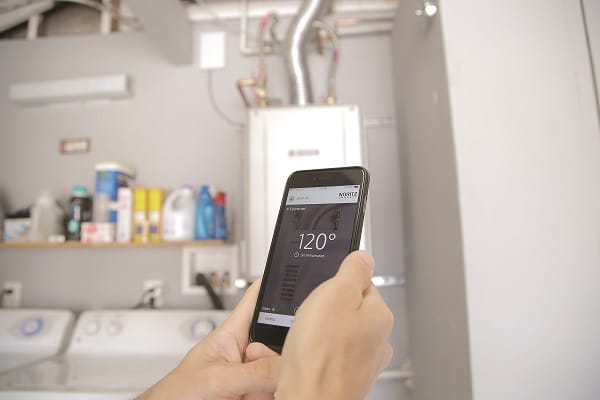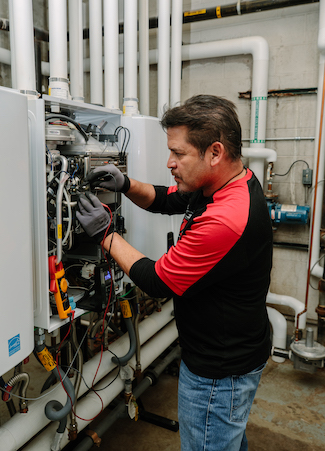Bunsey brings comprehensive propane industry experience, commercial market knowledge to PERC The Propane Education & Research Council (PERC) announces Jim Bunsey as its director of commercial business development. In his new role, Bunsey will be responsible for PERC’s commercial and power generation portfolios and will be the liaison to energy service companies (ESCOs), construction specifiers Read more
Propane Education & Research Council (PERC)

Bunsey brings comprehensive propane industry experience, commercial market knowledge to PERC
The Propane Education & Research Council (PERC) announces Jim Bunsey as its director of commercial business development.
 In his new role, Bunsey will be responsible for PERC’s commercial and power generation portfolios and will be the liaison to energy service companies (ESCOs), construction specifiers, and the commercial trades. He will also focus on commercial opportunities that require larger fuel storage tanks and delivery by larger transport trucks.
In his new role, Bunsey will be responsible for PERC’s commercial and power generation portfolios and will be the liaison to energy service companies (ESCOs), construction specifiers, and the commercial trades. He will also focus on commercial opportunities that require larger fuel storage tanks and delivery by larger transport trucks.
“Jim is a great addition to the PERC team and brings extensive knowledge to this position thanks to his experience in the propane industry,” said PERC president and CEO Tucker Perkins. “We look forward to all of the success Jim will bring to the commercial market program.”
Bunsey was director of operations at Superior Energy Systems, where he oversaw all propane and natural gas liquid product design and development as well as in-field installations, including fuel terminals and over 600 propane autogas infrastructure installations. Before joining Superior, he owned Triad Mechanical, a company that designed and installed commercial and industrial HVAC and fire protection systems.
Bunsey is a member of the National Propane Gas Association’s Technology, Standards and Safety Committee and the National Fire Protection Association’s Technical Committee on Liquefied Petroleum Gases, also known as the NFPA 58 committee. He will work from his home office in Oberlin, Ohio.
“I’m excited and humbled to be a part of the PERC team,” Bunsey said. “This is a great opportunity, and I’m ready to get started working with construction professionals to keep reinforcing propane’s environmental benefits.”

U.S. Department of Energy Awards $10 Million in Funding The Propane Education & Research Council (PERC) is partnering with Colorado State University (CSU) and 2G Energy to examine decarbonized district energy systems with renewable propane-powered combined cooling heat and power (CCHP). The project is one of six that was selected by the U.S. Department of Energy Read more
U.S. Department of Energy Awards $10 Million in Funding
The Propane Education & Research Council (PERC) is partnering with Colorado State University (CSU) and 2G Energy to examine decarbonized district energy systems with renewable propane-powered combined cooling heat and power (CCHP).
The project is one of six that was selected by the U.S. Department of Energy (DOE) to receive $10 million in funding from the Advanced Manufacturing Office (AMO) through the Technical Partnerships Funding Opportunity. The Opportunity supports funding for renewably supplied district energy systems and the development of regional smart manufacturing pilot initiatives.

“District energy systems provide multiple buildings with heating and/or cooling from a central plant,” said Jim Bunsey, director of commercial business development at PERC. “These systems increase efficiency and reduce emissions compared to individual building systems. They also provide a reliable and resilient source of thermal energy that is particularly useful for large energy users such as manufacturing facilities, healthcare campuses, and military bases.”
While district energy systems traditionally use fossil fuels, they can also incorporate renewable fuels for enabling low-carbon, flexible, energy-efficient CHP systems, which support the electrical grid.
“The research will help show that district energy systems can operate seamlessly with renewable fuels,” said Bunsey. “By incorporating propane-powered CHPs into these systems, it’s possible to provide necessary energy services in conjunction with onsite solar generation and simultaneously support the electrical grid.”
With the awarded funds, CSU will conduct a field demonstration of an integrated CCHP unit in a district energy system that uses the waste heat to drive a turbo-compression chiller, a technology developed at the university.
“This is important research for the commercial industry as it could be used to power critical infrastructure and facilities such as schools, hospitals, and large commercial complexes,” Bunsey said.
To learn more about this project and the benefits of propane, visit Propane.com.

Commercial construction professionals should specify with low emission propane generators for increased resiliency A new study from the Propane Education & Research Council (PERC) emphasizes the need to accelerate decarbonization today with clean energy sources like propane. The analysis, Power Generation: The Emissions Shifting Problem looks at the recent trends in power generation and how propane Read more
Commercial construction professionals should specify with low emission propane generators for increased resiliency
A new study from the Propane Education & Research Council (PERC) emphasizes the need to accelerate decarbonization today with clean energy sources like propane. The analysis, Power Generation: The Emissions Shifting Problem looks at the recent trends in power generation and how propane systems can offer a low emissions and resilient solution for commercial construction professionals and their customers.

“Popular opinion has been that electrification of everything is the only solution for the climate crisis,” said Dr. Gokul Vishwanathan, director of research & sustainability at PERC. “Unfortunately, this is a very simplistic one-dimensional proposal for an extremely complex multi-dimensional energy and climate problem.”
Climate change induced severe weather events coupled with natural disasters has led to electrical grid failures. Commercial propane generators provide supplemental power for a building’s electrical loads when power from the electric grid is interrupted.
Unexpected outages have increased as the U.S. places growing electricity demands on a century-old grid. In fact, the United States endures more blackouts than any other developed nation. And according to federal databases at the Department of Energy (DOE) and the North American Electric Reliability Corporation (NERC), the number of U.S. outages lasting more than an hour have increased steadily over the past decade. The Energy Information Administration (EIA) conducted an analysis and on average, a person in the US went over eight hours without electricity in 2020. That’s more than twice as long the average American went without power in 2013, the year that the EIA started keeping track. This loss of power to commercial buildings can impact vital systems like smoke and fire detection, elevators, refrigeration units, heating and cooling equipment, health and safety equipment, communications, and many other applications.
To combat those failures, reliance on diesel power generation has increased, creating a bigger emissions problem and degradation of local air quality. Propane power generation equipment, including backup generators and combined heat and power systems can help businesses increase safety and resiliency, avoid economic losses, and reduce emissions allowing businesses to retain their clean operation even with a power failure.
“Replacing diesel assets with propane-powered equipment will continue to push us toward significant air quality improvement and decarbonization,” said Vishwanathan. “It is markedly important to just not focus on electrification of all sectors but on a diversified portfolio that accounts for both market dynamics and consumer preferences.”
The analysis presented the following findings:
- There is a tremendous reliance on diesel generators for commercial and microgrid applications. Sales of diesel generators have significantly increased due to electric grid disturbances caused by severe weather events, exacerbating local air quality concerns.
- Propane can displace diesel generators in these markets and significantly improve local air quality, particularly by mitigating nitrogen oxides and particulate matter.
- Combined heat and power solutions offer both power and heat (and/or cooling), while providing significant reductions in nitrogen oxides, particulate matter, and carbon dioxide emissions.
“We know that customers are not only looking for a reliable power solution, but they’re seeking clean equipment with a low emissions profile, too,” said Bryan Cordill, director of residential and commercial business development at PERC. “Propane is a stable, portable energy source that can help support Americans even when the grid goes down, ensuring continuity of operations. Plus, using propane every day in your facilities helps reduce the strain on our fragile electric grid and the more diverse America’s energy mix is, the more reliable it is.”
Read the complete study and learn more at Propane.com/Research.

Three considerations for right-sized tankless installations–and increased customer satisfaction Propane tankless water heaters use less energy, cost less to operate, and produce fewer emissions than other options, which is why a growing number of homeowners are requesting these systems. As contractors know, determining the right configuration for their projects isn’t always straightforward. Whether considering a Read more
Three considerations for right-sized tankless installations–and increased customer satisfaction
Propane tankless water heaters use less energy, cost less to operate, and produce fewer emissions than other options, which is why a growing number of homeowners are requesting these systems.
As contractors know, determining the right configuration for their projects isn’t always straightforward. Whether considering a single unit for the whole home or multiples that run in tandem, knowing how to predict demand is key to giving customers a setup that meets their performance and cost expectations.
Here are three factors to consider when right-sizing a tankless system for projects.

How much water will the customer need?
Knowing how many people will live in the home, who will be using hot water, and for what purposes is the first step toward installing a system that will fulfill their specific needs. Additionally, understanding a customer’s lifestyle and habits–when they shower, how often they do laundry, and whether they expect to install radiant heating–can help determine expected peak demand times.
Take stock of the number and type of appliances and systems requiring hot water and note their water delivery rates. To calculate peak demand, the Department of Energy (DOE) recommends counting the number and gallons per minute (GPM) rate of faucets, showers, and appliances that could be in use in the home at any given time. Features such as in-floor radiant heating and spas can considerably raise a home’s hot water demands. Propane tankless water heaters provide an endless supply of hot water, averaging roughly 222 gallons per hour, compared with an average first-hour delivery rating of just 62 gallons per hour for electric storage tank models.
How much will the water need to be heated?
It’s important for contractors and installers to know the difference between outdoor ground temperatures and the desired indoor hot water temperature. That will reveal how much the water will need to heat and, therefore, how quickly the unit can deliver hot water.
For example, a typical shower head delivers 2.5 GPM, so a 9.4 GPM unit would run three to four showers depending on the inlet ground water temperature. According to the DOE, the average groundwater temperature across the U.S. is 50 degrees. In most cases, water should be heated to at least 120 degrees, so the home will need a tankless unit that can heat 2.5 GPM by 70 degrees. Lower flows can be heated to a bigger temperature rise and higher flows to a smaller temperature rise. Most propane or natural gas tankless water heaters on the market can handle a rate of 5 GPM at a 70-degree temperature rise. As fixtures are added, demand on the system increases and that 5 GPM rating can quickly get overwhelmed.
While a tankless unit will provide hot water almost instantly at the unit, the water still has to travel to the faucet, so location of the units is an important part of system design. Oftentimes, two smaller units, each placed closer to the end use site, can provide the project a higher level of satisfaction than one large or two smaller units installed in a single location. This also provides some redundancy if a unit or fixture needs to be serviced.

What can the home accommodate?
Peak demand scenarios are why contractors shouldn’t assume an undersized system will cover their client’s full range of needs. Oversizing isn’t as big of a concern with tankless systems. While oversizing a traditional tank water heater would result in significant wasted energy over the life of the unit, tankless units vary their flow rates based on demand and, therefore, having excess capacity doesn’t necessarily mean a tankless system is using more energy.
New projects can more easily accommodate tankless units at the point of use than existing homes, which are often designed for a central tank system–and may be better suited for one or more units installed in the basement. For most projects, one unit is sufficient. Multiple units may be used to handle larger loads or as homeowners scale up in the future as their hot water needs change. Because of the popularity and dependability of propane tankless water heaters, new products are available on the market that would allow customers to have “multiple” heaters in a single cabinet, or on a single rack that comes to the project ready for installation making system design easier still.
To determine the optimal number of tankless units for a home, help customers understand their consumption habits and how the system can be sized to meet their expectations. Determine peak demand and gauge actual usage and lifestyle habits. Then, compare prices for systems that meet those needs relative to a client’s budget. Put in as much capacity as those factors will allow to balance cost and comfort. By simply installing a propane system, customers will see optimal cost savings. That’s because propane tankless water heaters offer reduced energy costs, a lower total cost of ownership, and a longer service life compared with other options. Notably, propane tankless systems can reduce energy costs by up to 50 percent and eliminate standby energy loss from the tank.
To learn more about propane water heating systems, visit Propane.com/Water-Heating.
 Bryan Cordill the director of residential and commercial business development for the Propane Education & Research Council. He can be reached at bryan.cordill@propane.com.
Bryan Cordill the director of residential and commercial business development for the Propane Education & Research Council. He can be reached at bryan.cordill@propane.com.
